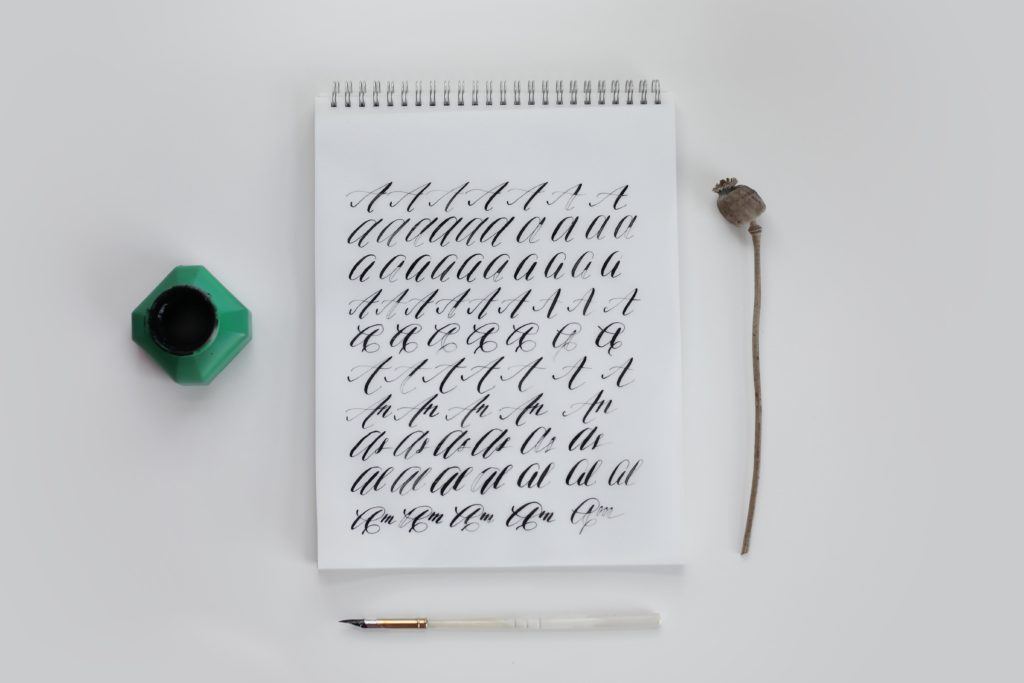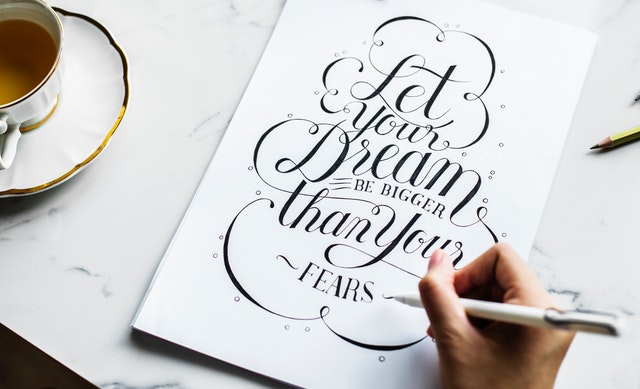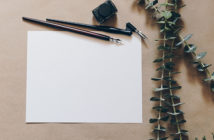There are many art forms out there, but perhaps the one most often seen is calligraphy.
It’s so prominent that we don’t even notice it; from quotes on our T-shirts, to book covers, to bullet journals on Instagram, calligraphy is everywhere.
Calligraphy is the art of ‘writing letters.’ Its modern definition has included any type of lettering. Whether or not you’re sticking to a traditional style, calligraphy is a great skill to learn and is useful in everyday life too!
From writing thank-you notes or making diary entries more artistic ventures, you can incorporate calligraphy into just about anything.
It may be hard to learn calligraphy, but with enough research and practice, you’re bound to be doing fancy pen work in no time.
Types of Calligraphy
There are many different types of calligraphy that you can find around the world, each of them with their own unique histories.
For those who want to learn calligraphy, understanding the varieties and the origins behind them can be a helpful, rewarding experience.
Here are popular calligraphy types from around the world.
Chinese Calligraphy
Perhaps one of the most popular types, Chinese calligraphy can be traced as far back as 4000 BC.
There are three primary materials used in traditional Chinese calligraphy:
- The brush, commonly made from bamboo and animal hair.
- The paper, made from plant pulp
- The ink. Unlike modern types, Chinese calligraphy traditionally uses an inkstone and inkstick
Japanese Calligraphy
Japanese calligraphy can trace its roots to Chinese calligraphy, as far back as 600 AD.
Gradually, the Japanese variant developed its own techniques, eventually leading into what looks like modern-day Japanese calligraphy.
This type uses similar tools as Chinese calligraphy, including a brush, inkstone, and inkstick. Traditional Japanese calligraphy also uses mulberry paper and a seal.
Arabic Calligraphy
Arabic calligraphy is called khatt in Arabic, which means: line, design, or construction.
Unlike most types, Arabic calligraphy uses a wide range of pens, differing in sizes. The most common used is the reed pen, made from reed grown along rivers.
The Java pan is used to create sharp edges and is commonly used for small scripts. The celi pen, on the other hand, is used for large scripts and is made from hardwood that is cut and shaped.
Modern Calligraphy
Used as a catch-all term for everything that isn’t ‘traditional’ calligraphy, modern calligraphy is a variety that doesn’t adhere to traditional rules. It’s ever-changing and creative!
The most significant difference between modern calligraphy and other types is its lack of consistency; traditional calligraphy requires you to learn specific strokes for every character and to recreate each stroke perfectly.
Meanwhile, modern calligraphy can mix and match different calligraphy fonts. Sometimes, it doesn’t adhere to a single font at all.
Supplies and Materials
There are many parts to good calligraphy, from the paper to the ink to the many different pens you can use.
To help you get started, check out these main tools used by beginning calligraphers.
Paper
When choosing paper for calligraphy, the main aspect to consider is its texture. For beginners, it’s better to use paper with a smooth finish.
For its texture, watercolor paper – specifically hot-pressed watercolor paper – is excellent for beginner calligraphers.
‘Hot press’ refers to the process used when making the paper; heat is applied during production, creating a smooth surface. A smooth surface will help you practice your strokes with fewer obstacles; more advanced calligraphers can write on rough paper, but its best to practice on smooth paper for now.
Another important factor when choosing calligraphy paper is thickness. Thick paper will absorb your ink, preventing bleeding and smearing. Since watercolor paper is made to absorb water, it’s ideal for practicing calligraphers.
Watercolor paper, however, can be expensive. An excellent paper to practice your strokes on is any kind that is at least 32 lb.
When looking for paper, look for its weight; it should say that it is 32 lb. or 120 gsm. GSM stands for grams per square meter and refers to the thickness (and therefore, weight) of any type of paper.
Pen
If you’re pursuing modern calligraphy, rather than the traditional varieties, you have a large choice of writing equipment.

Unlike the traditional writing techniques of the past, modern calligraphy can use more than just the classic brush and ink. Even pens with a bullet tip can let you create a faux calligraphy technique.
Modern calligraphy also allows you to mix and match different types of pens; each will come with its own strengths and weaknesses, and you’re going to have to learn how to use each.
Ink
Other than pens, different types of inks are also now available for calligraphers. Different fillers and binders are found in modern ink components and have opened up doors for added creativity.
The two primary inks that are used in modern calligraphy are Sumi and India ink. Both of them are opaque and very accessible for new calligraphers.
You can easily find them in art stores and office supply stores. There are very few differences between these inks, and both are good for most calligraphy projects. The main difference between them is how long they take to dry.
Sumi ink takes much longer; most brands require about ten hours to become waterproof. On the other hand, some brands of India ink become waterproof almost instantly.
Whether India ink dries waterproof or not depends on the binders that are used in its production.
This video goes into more detail on calligraphy tools.
The Parts of a Nib
When you begin learning basic calligraphy, you may start with felt-tipped pens. These make great calligraphy pens, as they have tips that can aid you in the stroke that you’re making.
Brush-tipped pens, for example, mimic the stroke of a brush, without requiring you to load it with ink.
However, you may find yourself transitioning to nibs. There are some expensive straight pens and nibs on the market, but any good calligraphy starter set will have at least one straight pen and a few nibs.
Learning how to use the straight pen and the nib can be an entirely new skill. To help you along, let’s begin by looking at the parts of a nib.
- Base: The broad bottom of the nib; this is the part that is inserted into the straight pen.
- Body: The body connects the base of the nib to the tip. It usually curves inwards, tapering towards the tip.
- Vent hole: The vent hole allows air to flow through the nib, and also functions as a stop for the slits. There will be no vent hole in dip pens.
- Slits: The space between the tines of the nib; this is where ink flows through towards the tip.
- Tines: The nib is separated into two parts near the tip; each part is called a tine. In less sturdy nibs, the tines may become misaligned or deformed; pushing the tines gently back into place will get your pen working properly again.
- Shoulders: The widest part of the nib, just above the end of the slit. The shoulders make the nib rigid and sturdy.
- Tip or Point: This is the very tip of your nib. Different nibs will have different tips, some broader than others.
Working with a Pen and Nib
Make your nib lead the line. This means that your stroke should be aligned with your nib.
Having your nib lead the line will lessen the chances of you deforming your tines, and also results in a more even stroke.
Hold the Pen Correctly
Hold the pen between the index finger and thumb, with the middle finger supporting the tip. Make sure to apply an even but light pressure.
Hold the pen too tightly and your hand is going to tire out faster, which will lead to uneven strokes.
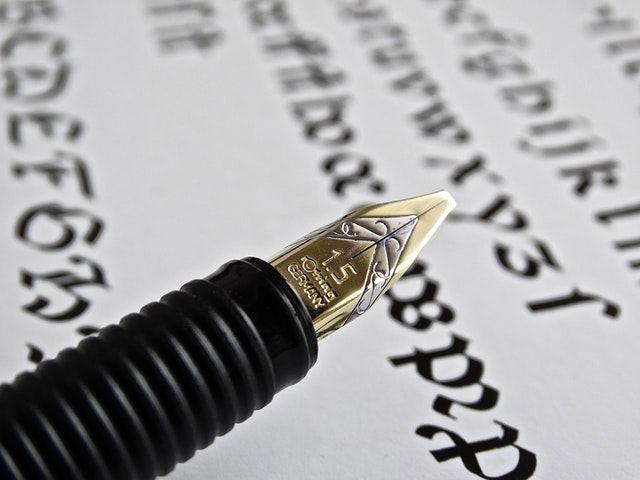
Practice Individual Strokes
When it comes to calligraphy, its best to focus on the individual letters instead of the whole word. When practicing, be sure to hone in on the different strokes that are part of a letter.
Printed calligraphy practice sheets, where you can trace over letters, are great for beginners. Alternatively, you can practice on lined, grid, or dotted paper.
Find a Rhythm
Calligraphy has a rhythm. A beginner mistake is trying to go too fast, and thinking that you have to write the entire word in one go.
Instead, start at a slower pace; each stroke should take roughly the same time. Practicing individual strokes can help you get used to a comfortable rhythm.
Do a Warm-Up
As with most creative endeavors, it’s always a good idea to warm up your muscles. Curves, circles, and lines (both vertical and horizontal) are an excellent warm-up for every calligrapher.
Try to make at least a line of each on your paper, or do random strokes for about five minutes before starting a project.
How to Do Calligraphy
Despite its long history and reputation for being an expensive hobby, it doesn’t take much to start on calligraphy. The only thing you absolutely need is a thick enough paper and your favorite pen!
There are many ways to begin your calligraphy journey; feel free to add or subtract what you need from the following list:
Start with Classical Calligraphy
If you want a more formal approach to calligraphy, it’s a good idea to start with traditional letterforms!
Learning classical calligraphy is a great way to introduce yourself to the art form, especially if you’re interested in its cultural aspects.
Copperplate calligraphy is a great place to start learning classical calligraphy; it’s what people usually think of when talking about traditional calligraphy, and it’s a very accessible typeface to learn in terms of worksheets and reference books.
Here’s a video showing an example of copperplate calligraphy.
Learn Hand-Lettering
Technically speaking, hand-lettering is separate from calligraphy, although the two share many tools and techniques.
The main difference between the two is that hand-lettering is more of ‘drawing a letter,’ while calligraphy is ‘writing letters.’ In this way, calligraphy is systematized, and a calligrapher can recreate letters the same way every time.
In the modern-day, hand-lettering can be called ‘faux calligraphy.’ The terms calligraphy and hand-lettering are used interchangeably, and modern calligraphy considers hand-lettering a type of calligraphy.
Hand-lettering, or faux calligraphy, is a great way to start in the art form (whether you’re planning on pursuing more traditional methods or not), as it is less restrictive.
Use the Tools that You’re Used to
We all know how to use pens and brushes. While we may not be especially good at it, the muscle memory we have already formed when writing can be helpful in learning calligraphy.
The Postman’s Knock recommends that you start with a ballpoint pen; while it’s not a traditional calligraphy tool, it’s an excellent way to grow accustom to the motions.
Paired with the freedom of hand-lettering, using tools that you’re already familiar with is a helpful transition for complete beginners.
Penmanship is Not Calligraphy
If you think that your handwriting is too atrocious for learning calligraphy, you have a common misconception.
Much like how painters and illustrators can have terrible handwriting, calligraphers do not necessarily have good penmanship either. Calligraphy is almost entirely different from writing.
Other than the fact that they deal with letters, the techniques and skills that they use are entirely different. Calligraphy, especially modern calligraphy, draws more on illustrating skills rather than penmanship.
If you can draw a straight line and decent circles, you’re going to be alright.
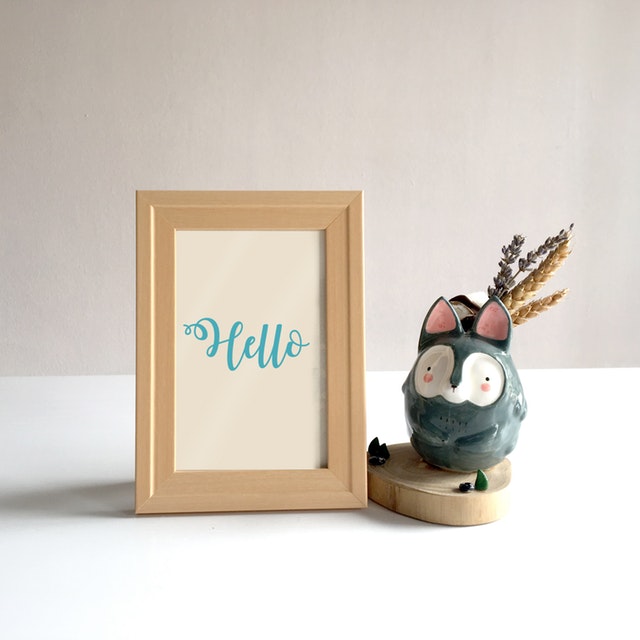
Take Inspiration
Designing fonts is a whole skill, and there are many talented designers out there. Different fonts are also all around us, from storefronts to hand-lettered quotes on our social media feeds.
Inspiration is everywhere and we just have to look! If you find yourself liking a particular font, why not practice it a bit on your own?
Learning how to do calligraphy can be daunting at first, and it is a hard skill to master. However, it truly is a rewarding talent that you can use in everyday life, whether as a gift or just to make things pretty.
What are some of your favorite calligraphy fonts?

